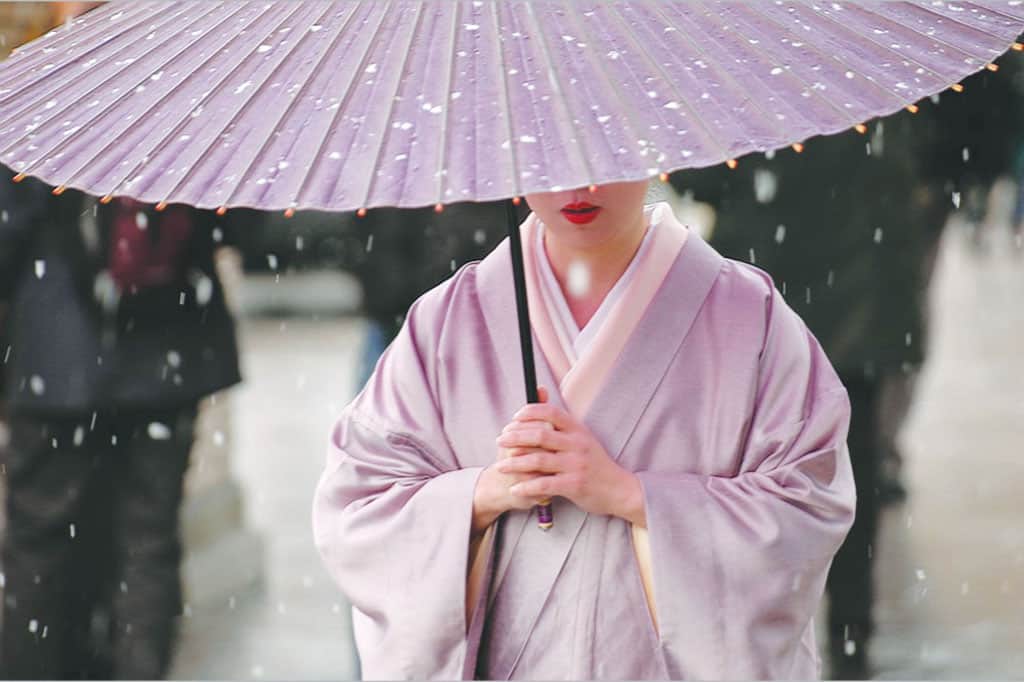
More than a millennium of history unfolds daily in Kyoto, where a casual stroll is like a walk through time. Fittingly, incentive experiences explore the city’s rich cultural heritage through droves of artistic, culinary and nature-inspired traditions. Yoshiaki Matsui, deputy director of conventions for the Kyoto Convention & Visitors Bureau, says the growing popularity of Kyoto’s tea ceremony and Zen meditation experiences sparked a deeper look at how the CVB could help planners leverage cultural traditions to create authentic and meaningful Kyoto incentive experiences.
Kimono Strutting
Japan’s traditional attire is one area of interest—the kimono being an iconic, globally recognized symbol of the country. In Kyoto, groups will find a number of exclusive kimono experiences—from learning its rules and uses to selecting one from hundreds of beautiful options, complete with a professional hair styling, for a stroll through the historic Gion district. Groups can also strut their stuff in furisode (formal attire) for elegant cocktail receptions and galas, or learn the charms of the maiko (apprentice geisha) during a makeover and photo session.
Embracing the Inner Warrior
A full-clad samurai experience at the Samurai Kembu Theatre culminates in a kembu performance, or choreography symbolizing the culture and spirituality of the samurai using a katana sword and folding fan. At the end of the class, attendees will have earned certification in kembu. An hour-long taiko drumming class at the Taiko Center transports groups back to feudal Japan when it was used to bolster a warrior’s morale. Taiko classes can be private and tailored at the center or in a handful of local temples.
Artsy Experiences
Matsui says MICE events also tend to involve one of 70 hands-on art experiences—from fan painting and ceramic making to calligraphy classes in a master’s home or Zen priest’s temple. Groups can learn the art of chopstick making, try their hands at furoshiki, the art of wrapping or take it a step further with origami classes, an artful practice dating back to ancient times. Kado, or “the way of flowers,” also dates back to ancient times, when flowers were arranged as offering to a god or Buddha. As the home of kado, Kyoto has many flower arrangement schools where groups can explore this traditional art.
Cooking Workshops
Japan’s traditional cuisine, named a cultural heritage asset by UNESCO in 2013, spawns its own exciting options—from sushi-making and obanzai (traditional healthy dishes) classes in a cooking instructor’s home to Michelin-starred cuisine served in a Zen Buddhist temple. Traditional Japanese cuisine (washoku) workshops give insight into the art and history behind this traditional diet, which actually extends well beyond sushi and tempura.
Along with modern, large-scale venues such as the Kyoto International Conference Center, Kyoto International Exhibition Hall and newly opened Rohm Theatre, dubbed Kyoto’s cultural center, there are 17 UNESCO World Heritage Sites and over 2,000 temples and shrines—many available for meetings and events. Whether looking for a tried-and-true Hyatt, Starwood or Ritz-Carlton or unconventional lodging in traditional machiya townhouses or local temples, an array of accommodation options fit the needs of every group.










